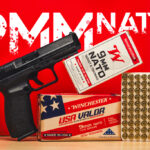
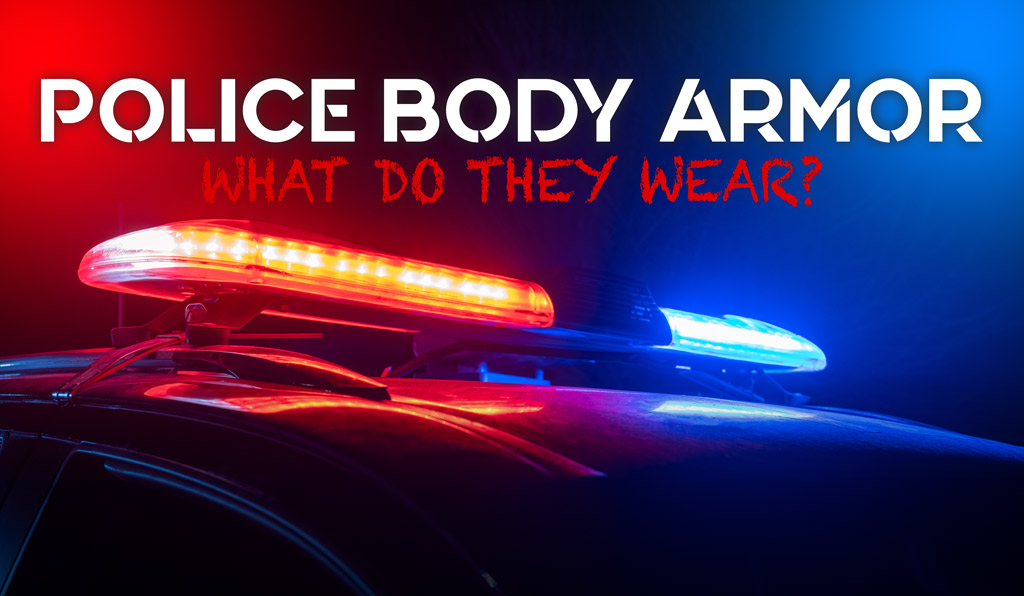
When choosing which type of police body armor to wear as an officer, look at the rules and regulations (general orders) of the agency to which you belong. This ensures you stay within their polices and procedures. Next, consider the type of scenario you’ll be facing. For example, as an officer, are you responding to calls daily, are you on the SWAT (Special Weapons and Tactics Team), are you on a Task Force (narcotic/gang suppression), or are you an undercover officer?
Along with considering your specific job, you should also consider which vest will best fit your build. The vest should be comfortable while sitting and standing, providing as much protection as possible.
Common Law Enforcement Body Armor
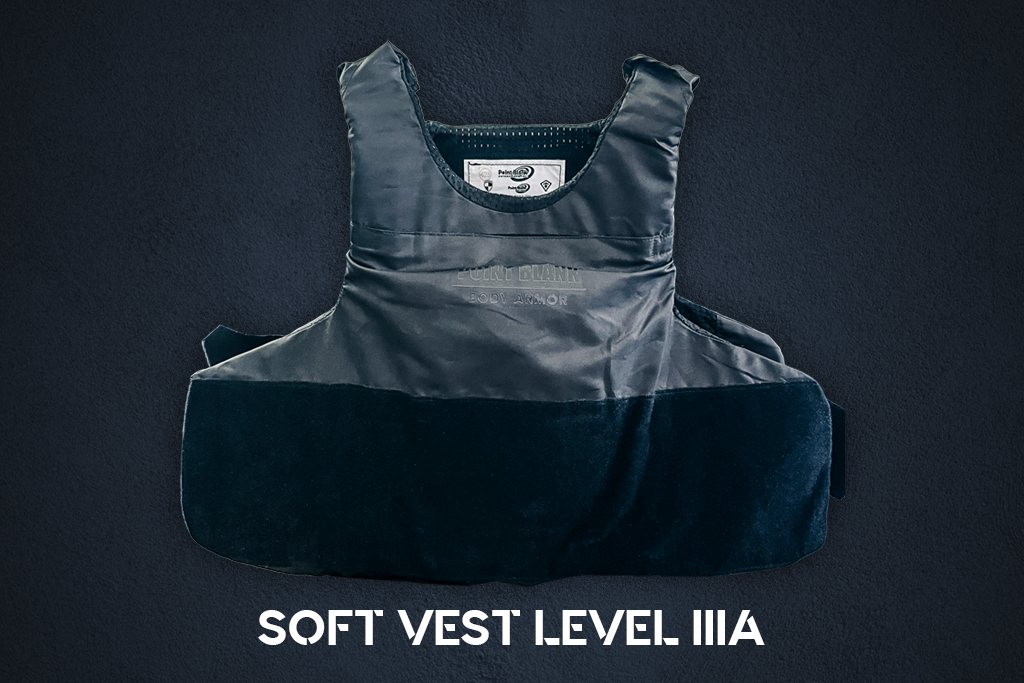
Level IIIA soft vest offers advanced protection against handgun threats while ensuring lightweight comfort for all-day wear.
One of the most common vests among law enforcement is a Level IIIA ballistic vest, also known as a soft vest. This vest protects against commonly used pistol calibers, up to a .44 Magnum. However, a Level IIIA will not stop a rifle round, due to rifle rounds having a higher velocity. This vest can provide some protection against edged weapons, but a knife can penetrate the vest.
However, there is some added protection you can add to the soft vest, which is a “trauma plate”. The trauma plates vary in size and can go in front of the soft vest panel. Trauma plate sizes are between 5 x 8 (12.7 x 20.3 cm) with a weight of 0.22 kg / 0.48 lbs and 10 x 12 (25.4 x 30.5 cm) with a weight of 0.62 kg / 1.37 lbs.
Trauma plates are rated at Level III and IV, which stand up to high velocity rifle rounds, including .308 and 5.56 NATO rounds. Level III trauma plates can stop most rifle rounds, while a Level IV plate can stop armor-piercing rounds. So, to summarize, if a rifle caliber round hits the trauma plate, it will stop it, but if the rifle round hits anywhere else on the soft vest, it will penetrate.
Level IIIA ballistic vests are most common among law enforcement. They’re made from Kevlar and designed for comfort and flexibility. They can be worn for longer periods, especially when working long shifts.
How Police Body Armor Works
When impacted by a round, the vest distributes the bullet’s energy. The vest acts as a net, slowing and stopping the bullet, preventing the round from penetrating the vest. In other words, the vest is like a baseball glove while the bullet is the baseball. Once the ball hits the glove, the webbing of the glove “catches” the ball and stops it.
Now, with that thought in mind, picture that glove trying to stop a knife from penetrating it. If the knife is dull, it may stop some of the blade from going through. But if the knife is sharp or has a lot of force behind it, it’ll go right through it.
What To Look For In Police Body Armor
When choosing a vest, first and foremost, ensure the vest is agency-approved. This will be easy to do when agencies often provide their officers with body armor. Still, there are cases where an agency may allow an officer to wear personal gear. In this case, the agency will have to approve the vest directly.
Fit and comfort are also very important in a vest. An improperly fitting vest can cause discomfort, pain, and restrict movement, so always try on your vest before wearing it in the field.
Different Types of Police Body Armor
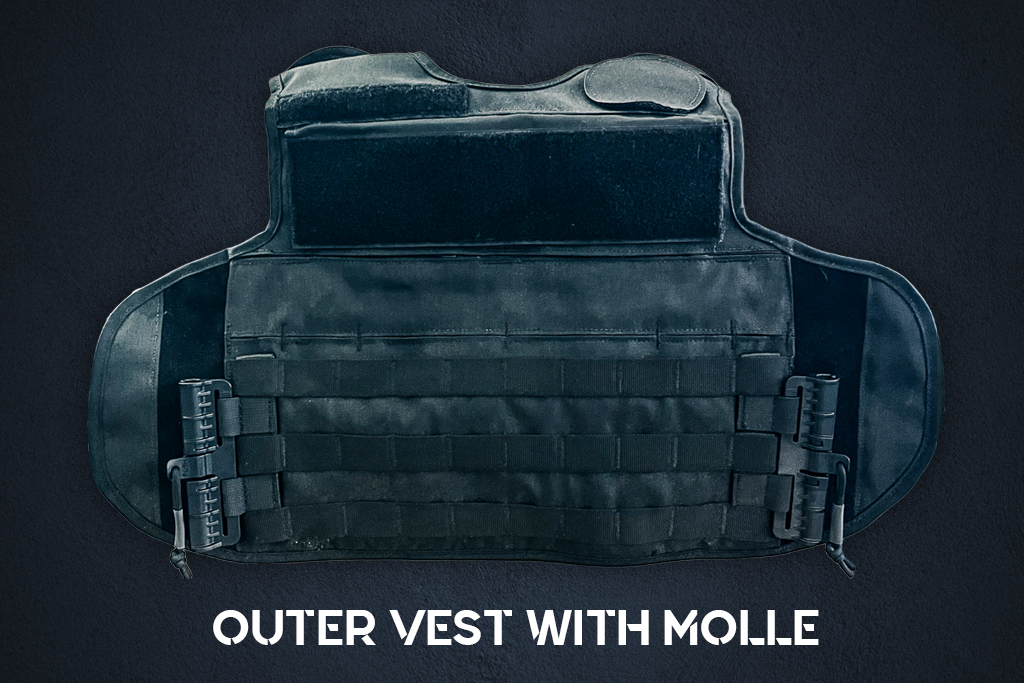
If you need to carry extra gear, like medical equipment, a Molle panel allows you to mount it to your chest rig.
Before we get into different scenarios and when you should wear a vest, let’s look at the different types. We already covered the most common one—the soft vest worn underneath the uniform shirt. Now, let’s look at the outer vest and the plate carrier.
Outer Vest
The outer vest is popular for its comfort and load distribution. When wearing an outer vest carrier, you simply take the ballistic panels out of the soft vest and place them into the outer carrier. Outer carriers also have webbing stitched onto them, commonly called “MOLLE” — an acronym for Modular Lightweight Load-carrying Equipment.
Load-Carrying Equipment
The MOLLE on the outer carrier allows the wearer to mount their equipment onto the vest, instead of wearing it around their waist. Mounting equipment onto the vest distributes the weight evenly across the body, reducing the strain on the lower back and hips. Also, the outer vest allows for better air flow, keeping the body at a cooler temperature. This is the opposite of a soft vest, which goes underneath the uniform shirt.
Plate Carrier Kit
Plate carriers are designed to carry ballistic plates, while a kit is a group of items or gear used together. To make it simple, think of it like this: a new kit out of the box is a plate carrier. Once you mount all your gear on it, i.e., magazines, holsters, handcuffs, bicep/groin protector, and so on, the plate carrier becomes a “kit.”
Plate carriers provide added protection due to having rigid armor plates inside them, which work hand in hand with the soft vest. Hard armor plates are typically a Level III ballistic plate, which can stop different rifle calibers (.223, 5.56, and 7.62). These plates are usually made from steel, polyethylene, or ceramic. This type of vest is typically worn by SWAT teams and other tactical units that deal with high-risk situations, such as an active shooter.
Senarios
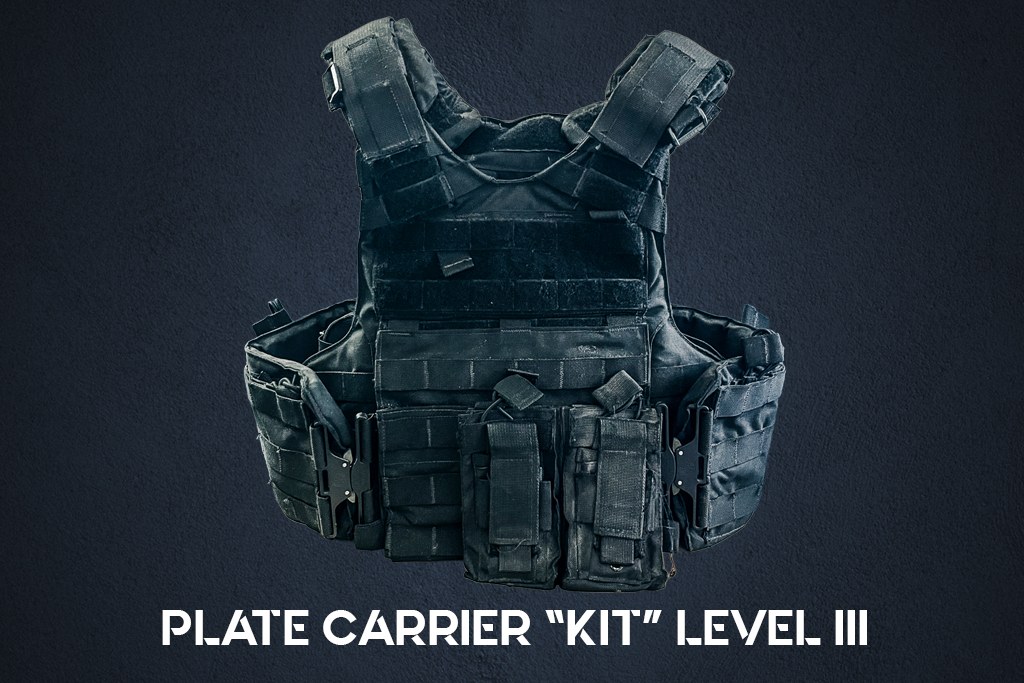
Level III plate carrier kit offers rugged defense against rifle rounds, combining durability, mobility, and mission-ready performance.
Soft Vest
Let’s start with the soft vest, which is typically worn daily by patrol officers. An officer who works patrol, responding to calls and conducting traffic stops, will likely wear a soft vest. Their responsibilities and duties require a lightweight, flexible, and most importantly, comfortable vest since they will wear it for an extended time.
Outer Carrier
Detectives typically wear this vest, and some specialty units, i.e,. a gang unit. These officers choose an outer carrier because of its quick donning ability, which you can wear over any clothing (no need to change clothes), and its comfort. Also, with its MOLLE, the officer can mount all necessary equipment onto it. That means you won’t have to spend time putting on each item if you need to grab it and go. You can simply grab the carrier, and once it’s on, you’ll have everything you need.
Plate Carrier Kit
Officers who deal with high-risk situations wear these vests because they’re not typically daily wear items. Officers usually know ahead of time when they’ll need to wear their kit. For example, if an active shooter is in progress, the officer will know they need their kit, not just a soft vest.
These officers will also have an outer carrier vest, so they can quickly remove their outer carrier and put on their kit. A rule of thumb for these scenarios: it’s a good idea to have two of each piece of equipment, so that when removing one vest for another, you won’t have to switch each piece of gear, and it’s good practice to have both vests set up the same. If you carry your handcuffs on the right side of your outer carrier, keep them on the right side of your kit so they’re always in the same place when you need them.
When dealing with high-risk and stressful situations, one of the first things you’ll lose is your fine motor skills. When you have reduced dexterity, you don’t want to fumble with your vest looking for an item. It’s also good practice to make sure you can reach each item on your vest. Even though it looked like a good spot when you mounted the item, it may be out of reach when you have the vest on.
Personal Usage of Police Body Armor
Now, let’s get into some personal ballistic vests. As a civilian, you can purchase any body armor you wish. Owning a plate carrier is legal under federal law. However, some states may have different restrictions on purchasing and possessing, so check your local laws.
You can start by setting up your plate carrier with basic equipment like magazine holsters and an IFAK (Individual First Aid Kit), then continue building your kit from there. For personal plate carriers (kits), it all depends on what you want and can afford.
Conclusion: What Police Body Armor Vest is Right for the Job?
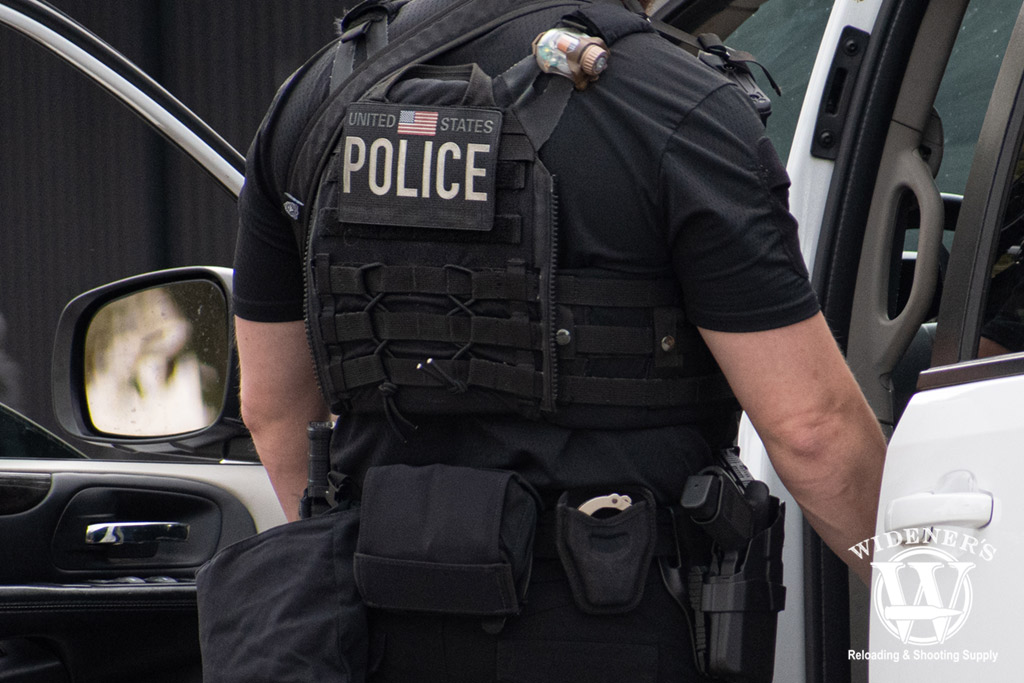
Choosing the right LEO body armor comes down to duty, responsibility, and agency approval.
How do you know which vest is right for you? This ultimately comes down to duties, responsibilities, and agency approval. As for myself, I like options. Since you never know what the day will bring, you should have at least two of the three on hand.
Will you need to put something on quickly because a call came in while you were driving to the gym? Is it a SWAT call-out where there’s a possibility you may receive gunfire? Or, are you on patrol in a neighborhood? Whatever comes your way, you want to be ready and, most importantly, prepared. Because, like Benjamin Franklin says, “By failing to prepare, you are preparing to fail.”
If you’re curious to learn more about the guns police officers use, read this article to find out.
Guest writer Anton Jefferson served 15 years in the Army, 10 years in law enforcement, and 5 years on the SWAT team. He is a former police officer who works as a firearms and defensive tactics instructor.


